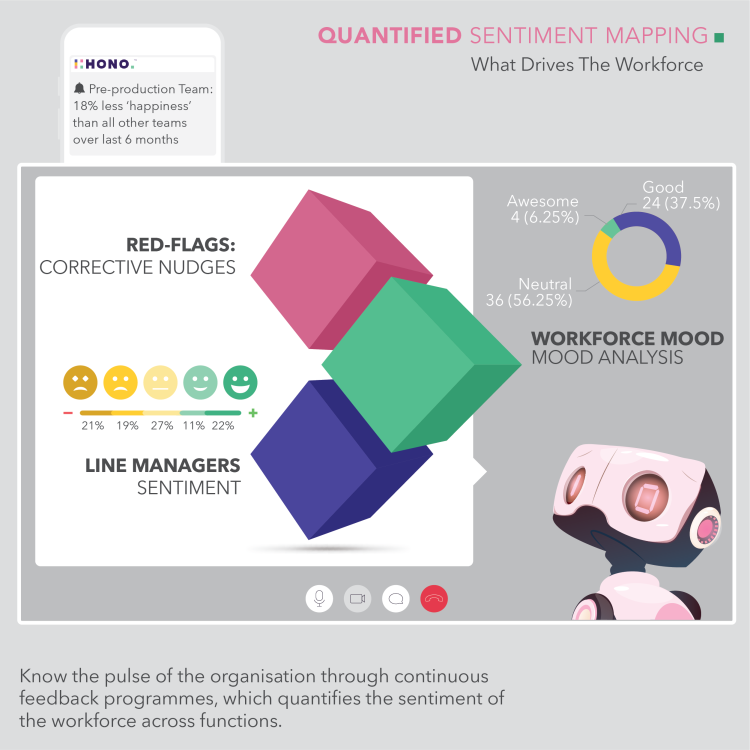Understanding the Importance of Employee Engagement in the Workplace
Gallup's State of the Global Workplace: 2022 Report estimates that $7.8 trillion is lost annually due to the lack of productivity caused by disengaged employees. The figure represents 11% of total world GDP.
What is employee engagement?
Employee engagement refers to the level of emotional commitment and involvement an employee has toward their work, organization, and goals. It goes beyond mere job satisfaction and encompasses a deep connection and enthusiasm towards one's role, a sense of purpose, and alignment with the organization's values and objectives. Engaged employees are highly motivated, dedicated, and willing to go the extra mile to contribute to the success of the company. They exhibit higher levels of productivity, innovation, and overall job satisfaction, leading to improved organizational performance and success. Employee engagement is nurtured through effective communication, supportive leadership, meaningful work, growth opportunities, and a positive work environment that values and recognizes employee contributions.
Find out how conversational AI and intelligent HRMS is transforming the employee experience.

Benefits of Employee Engagement
#Enhanced employee productivity
According to TechJury employee engagement survey, businesses with highly engaged employees are 21% more profitable than their competitors. Engaged employees are 38 percent more likely to produce above-average results, according to the Workplace Research Foundation.
When employees are invested in their work, they are more likely to produce high-quality results on a regular basis.
Also Read: How People Sentiments Impacts Productivity!
#Improve employee retention
Employees that are involved in their work are more likely to be motivated and devoted to their employer, according to Forbes. This leads to more business goals being met and the organization moving forward.
Employee engagement is vital for retaining top talent and is a key element of employee satisfaction since disengaged employees are more likely to quit.
#Boost in profitability
Gallup found that companies with highly engaged employees had 21% higher profits. Engaged employees are more reliable in punctuality and devote more effort to ensuring the quality of their work. These employees naturally support their companies in enhancing relations with customers and achieving remarkable organic growth.
#Less burnout and better mental wellness
Companies are now seeing a record 70% burnout rate due to the increased stress levels of employees brought on by the Covid pandemic. Employee satisfaction and commitment to the company improve when management provides a genuine workplace employee engagement initiative.
Also Read: Creating a Culture of Wellness: Empowering Employees for Success on Global Wellness Day
What are the common challenges faced in improving employee engagement?
Improving employee engagement presents numerous problems. They are:
#Lack of leadership support
Employees must believe that their leaders are supportive and invested in their performance. Employees often struggle to feel motivated and passionate about their work when leaders are not interested.
#Communication breakdowns
Communication is critical to the functioning of any organization. Communication gaps between employees and departments can lead to confusion, irritation, and disengagement.
#Measuring employee engagement is difficult
Employee engagement can be difficult to assess accurately. There are numerous tools and employee engagement strategies accessible, but it is critical to select the ones that are appropriate for your organization.
#Lack of appropriate technology
By making it easier for employees to collaborate, communicate, and access information, the correct technology can help to enhance employee engagement. However, not all organizations have the necessary technologies.
#Lack of growth and recognition
Employees must believe that they are growing and developing in their employment if they are to feel fulfilled. They may get disengaged if they do not believe they are being challenged or recognized.
#Poor work-life balance
In order to be engaged, employees must be able to balance their professional and personal lives. It can be difficult for them to focus on their task when they are worried or overloaded.
These are just a few of the problems that organizations encounter when attempting to increase employee engagement. Organizations may establish a more happy and productive work environment, which will lead to higher employee engagement, by tackling these difficulties.
Apart from the challenges mentioned above, there are a number of other variables that might lead to low employee engagement, including:
- Uncertain job expectations: In order to feel motivated and engaged, employees must understand what is expected of them. Employees may feel lost and unaware of what they are supposed to be doing if work expectations are unclear.
- Lack of development opportunities: Employees must believe that they are growing and developing in their roles. They may get bored and uninterested if they do not have prospects for advancement.
- Unfair treatment: In order to be engaged, employees must believe they are being treated properly. They may get bitter and disengaged if they believe they are being treated unfairly.
- Toxic workplace: A toxic workplace can be a primary driver of low employee engagement. Employees are more prone to be disengaged if they believe they work in a negative and hostile atmosphere.
What are the key drivers of employee engagement?
The major drivers of employee engagement are:
- Meaning and a sense of purpose
- Job fulfillment
- Psychological security
- Goal support and input from employees
- Trust and integrity with your leadership team
- Interactions with coworkers
- Pride in the organization
- Opportunities for advancement in one's career
- A stipend and benefits package
The next stage is to create an action plan after determining which drivers to address. Consider the amount of effort involved, and how you intend to manage and measure engagement success.
Employees these days need an emotional connection with their work, therefore, as an organization you must go beyond benefits and employee appreciation.
Employee engagement strategies and initiatives to boost organizational growth
- Promote two-way communication
The first criterion for increasing employee engagement is to keep employees informed. If companies are secretive and only share information with people who "need to know," it's possible that their employees will be less engaged. When employees know how decisions made by the company will affect them at work or how they should handle situations, they are more likely to trust the company.
- Recognize Good Work
As per the report by Forbes, two out of every three employees believe they do not receive adequate appreciation for their efforts. As a result, most employees will not perform to their full ability and may eventually disengage. Furthermore, highly trained and skilled talent is continuously on the lookout for greater opportunities.
As a result, it is crucial to encourage a recognition-rich environment in which good performance is recognized with benefits and incentives.
- Invest in Personal Growth
Do you want to keep your company's best employees? You will gain if you ensure their personal progress. By investing in your employees' futures in whatever way - through a proprietary training program or by funding their higher education, you strengthen the bond between the organization and the employees.
- Hire Competent Managers
Managers serve as intermediaries between higher management and employees. Most of the time, employees rarely or never interact with higher authorities, but they talk to their immediate bosses every day. While organizations might opt to educate their managers on how to better engage their people, hiring an effective manager matters first.
- Create a Sense of Purpose
Your employees aren't just another part of the production process; they could also be ambassadors for your company's values and goals.
Even though a big paycheck helps, an employee will be much more invested in your company if they feel an emotional connection to it. They will also be able to contribute much more.
One way to make sure of this is to make sure your employees know how important their work is. Tell them how it's helping the organization reach its business goals. To put it simply, businesses need to start making their employees feel like they matter.
Employee engagement best practices
- Enable HR enhancement with conversational AI for employee engagement
- Creating an employee engagement strategy may need some trial and error at first, but there are ways to ensure you're on the right track.
- Here are some recommended practices to keep in mind while developing your employee engagement strategy:
- Set a good example - Engagement begins at the top, with leadership participation demonstrating transparency and your company's values.
- Recognize engaged employees – Create a program to identify and reward the most engaged employees.
- Continue to measure involvement – Conduct pulse surveys to determine how your programs are doing.
- Create a non-judgmental environment in which employees feel comfortable offering and receiving feedback.
- Encourage work-life balance by providing incentives for volunteering, flexible schedules, or paid time off. This indicates that you value your employees and their time.
- Provide options for growth and career development – If you give your employees opportunities for advancement within your organization, they will be more engaged.
The easiest way to begin is to assess your current situation. Determine the current level of employee engagement.
Invest in effective employee engagement tools, such as that provided by HONO, to simplify the process. This platform is an excellent place to begin implementing these employee engagement initiatives.
With HONO Pulse, you can effortlessly track sentiment and responses, conduct feedback surveys, and enjoy real-time response monitoring and reporting, all powered by our advanced AI-backed system.
Here's how HONO Pulse can benefit your team:
Sentiment and Response Tracking: Gain a deep understanding of employee sentiment and track responses in real time. HONO Pulse enables you to capture valuable insights, identify trends, and address concerns promptly, allowing you to foster a more engaged and satisfied workforce.
Feedback Surveys: Seamlessly collect feedback from employees with user-friendly surveys customized to meet your specific needs. HONO Pulse offers flexible survey creation and distribution options, ensuring that you gather the information necessary to make informed decisions and drive positive change within the organization.
Real-time Response and Reporting: With HONO Pulse, you can bid farewell to delayed insights. Our tool provides real-time response monitoring, allowing you to analyze data as it comes in and take immediate action. Additionally, our AI-backed reporting system generates comprehensive reports with valuable insights, empowering you to make data-driven decisions quickly and efficiently.
AI-backed System: Harness the power of artificial intelligence with HONO Pulse. Our advanced AI system enhances the accuracy and efficiency of sentiment analysis, response tracking, and reporting, providing you with meaningful and actionable data for driving continuous improvement.
We invite you to explore the capabilities of HONO Pulse and experience the transformative impact it can have on your feedback management processes. Let us unlock the power of real-time insights and AI-driven reporting for your team's success.
For more information or to schedule a demo, please reach out to our dedicated team - Request a Demo. Together, let's elevate your feedback management to new heights with HONO Pulse!

Author:
HONO Desk
SUBSCRIBE NEWSLETTER
For HR innovation updates
Download free HR Case Studies





